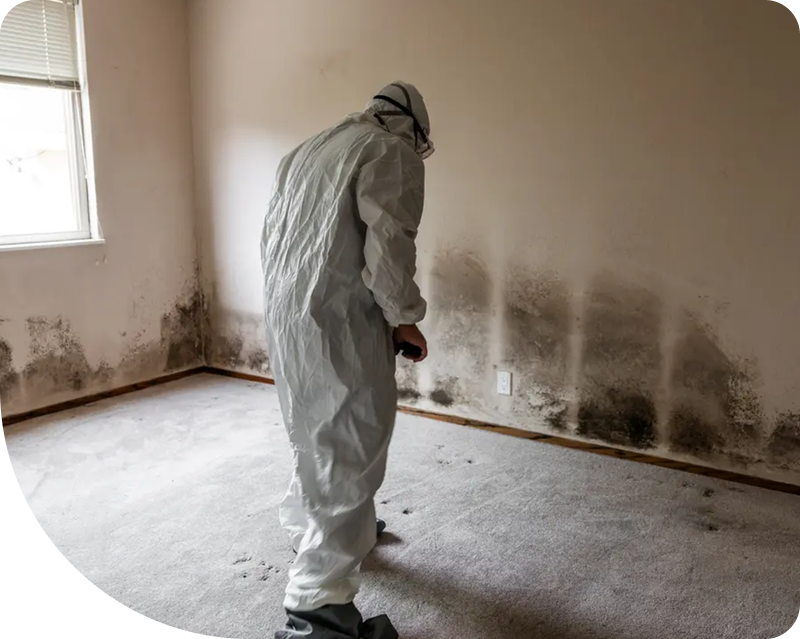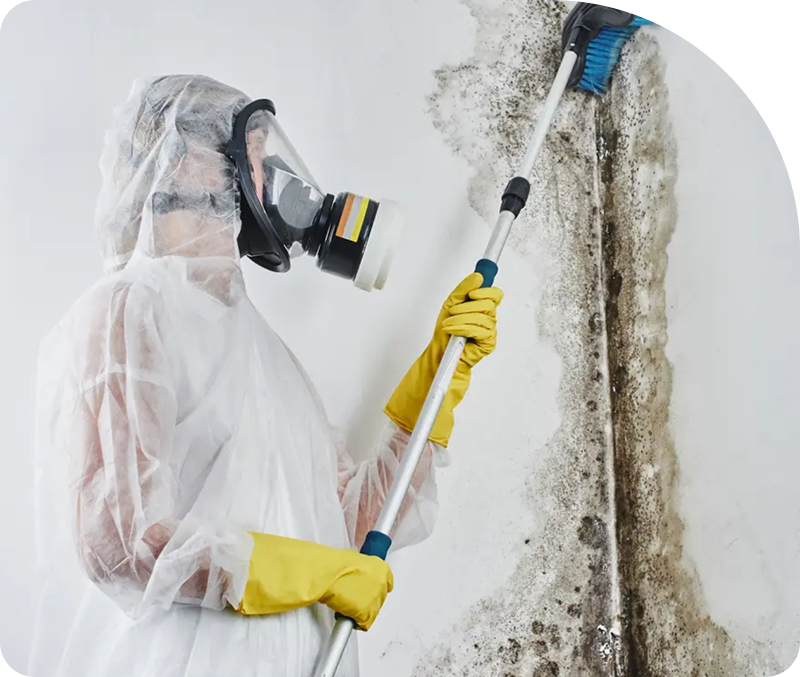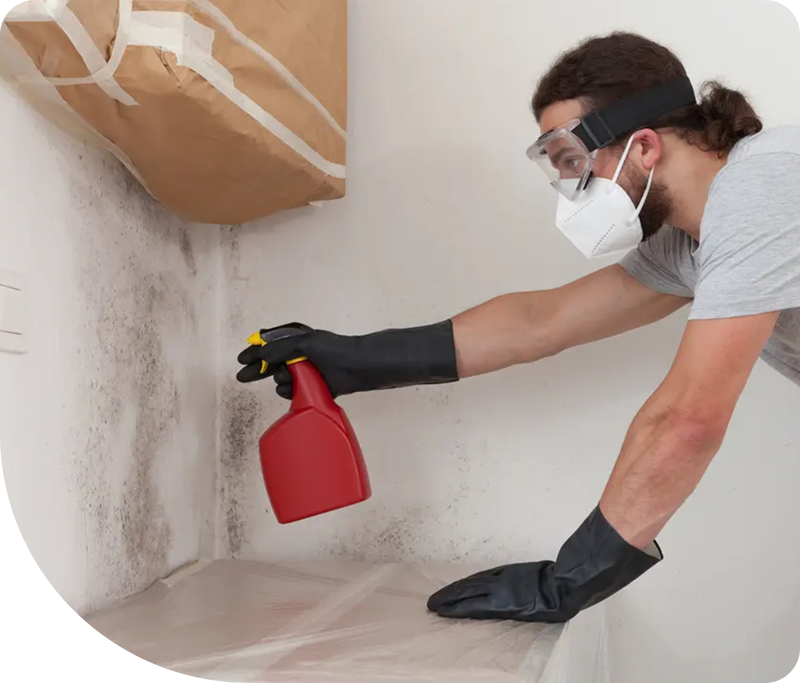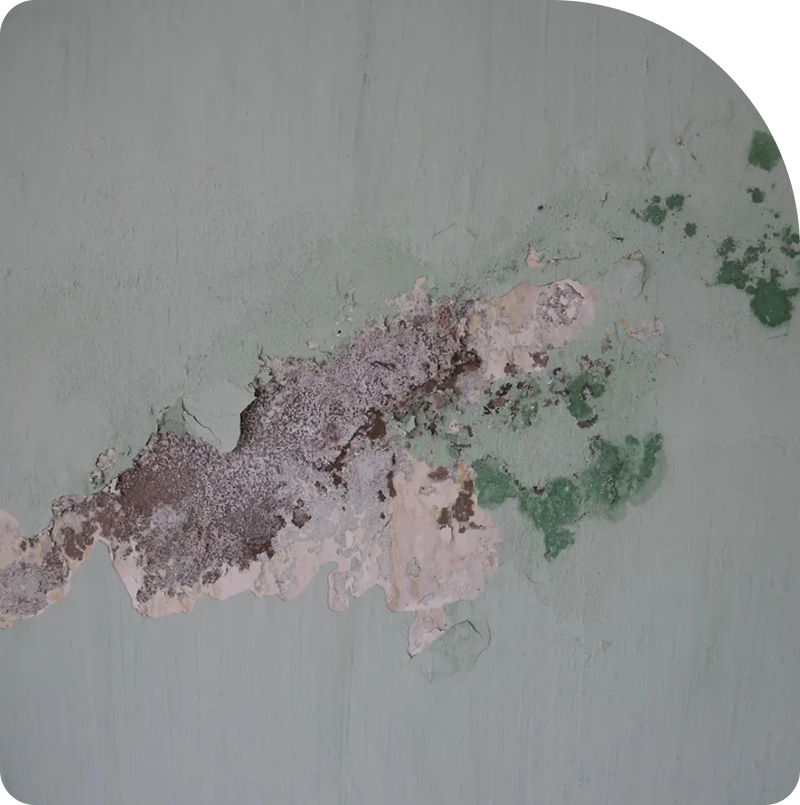our services
Mould Remediation
Professional Mould Remediation & Removal Services: Restoring Healthy Environments
Flood Squad offers comprehensive mould remediation services across Sydney
To help restore healthy living and working environments. Our skilled technicians use advanced equipment to identify and safely eliminate mould at the source, ensuring your space is mould-free and safe.

Our Key Mould Remediation Services Include:
- Mould Inspection: Thorough examination of affected areas to identify the extent of the mould growth.
- Containment: Sealing off areas to prevent the spread of mould spores during the removal process.
- Mould Removal: Safe and effective removal of all mould using professional equipment.
- Structural Drying: Ensuring all affected areas are properly dried to prevent future mould growth.
- Mould Prevention: Applying treatment to prevent reoccurrence and ensure long-term safety.
Why Choose Us for Mould Removal in Sydney?
Expert Technicians
Our team has years of experience dealing with mould problems of all sizes, ensuring a thorough and safe remediation process.
Health-Focused Approach
We understand the health risks of mould, which is why our methods focus on removing mould entirely and preventing it from coming back.
Advanced Equipment
We use state-of-the-art tools, including HEPA vacuums and air filtration devices, to ensure a complete and safe remediation process.
What is mould?
Mould is a type of fungi. It can grow on food and plants, as well as wood, curtains, carpets, walls and other areas around your home and work space.
Generally, it likes to grow in places that are damp or poorly ventilated, like kitchens, bathrooms, sheds or garages. It can also grow well in air conditioners, and around fish tanks and water features.
You may notice more mould after days of rain, or heat and humidity. This is the ideal breeding ground for mould. If you live in a geographic location with lots of rain or humidity, you’ll know mould is a constant problem.
Sometimes you may not be able to see it but you can smell it, as mould creates a distinctive, unpleasant, musty odour.

Dangers of mould
Most people are not aware of the dangers of mould, affecting most of the world, it’s an issue people aren’t too educated about. Mould can be dangerous for everyone. Mould poisoning can cause respiratory issues, headaches, aches and pains, and other symptoms. It could heavily affect & cause long-term harm for people with asthma and other respiratory issues, allergies, diabetes, low immunity, cancer and other health problems. Small children and the elderly are also in a high-risk category.
You can inhale mould spores through the air or touch them while disturbing or moving objects with mould on them without even noticing, such as boxes in a dark, damp shed or even in your poorly ventilated bedroom.
As well as being a health risk, mould can destroy the material it grows on, weaken the structure of walls or cardboard, and ruin your precious books and paperwork.

Dangers of mould
Most people are not aware of the dangers of mould, affecting most of the world, it’s an issue people aren’t too educated about. Mould can be dangerous for everyone. Mould poisoning can cause respiratory issues, headaches, aches and pains, and other symptoms. It could heavily affect & cause long-term harm for people with asthma and other respiratory issues, allergies, diabetes, low immunity, cancer and other health problems. Small children and the elderly are also in a high-risk category.
You can inhale mould spores through the air or touch them while disturbing or moving objects with mould on them without even noticing, such as boxes in a dark, damp shed or even in your poorly ventilated bedroom.
As well as being a health risk, mould can destroy the material it grows on, weaken the structure of walls or cardboard, and ruin your precious books and paperwork.
How to prevent mould
The best way to stop mould growing is to stop moisture getting in.
To prevent moisture and mould growth, you should:
- Use a dehumidifier
- Use an exhaust fan in the bathroom
- Check the house for any holes or cracks where moisture can get in
- Dry and air out the house as soon as possible after rain.
- Open windows and doors and turn the air conditioner onto a dry mode. (Check your air conditioner for mould first, as this is a good place for it to grow).
If items are wet and you can’t clean them, you may have to throw them out to prevent mould growing. This includes carpets and rugs, boxes and mattresses.
Read the State Library of Queensland’s advice on how to protect your collections from mould and water damage. (please reference NSW or Australia wide as it’s more appropriate for our audience)
How to prevent mould
The best way to stop mould growing is to stop moisture getting in.
To prevent moisture and mould growth, you should:
- Use a dehumidifier
- Use an exhaust fan in the bathroom
- Check the house for any holes or cracks where moisture can get in
- Dry and air out the house as soon as possible after rain.
- Open windows and doors and turn the air conditioner onto a dry mode. (Check your air conditioner for mould first, as this is a good place for it to grow).
If items are wet and you can’t clean them, you may have to throw them out to prevent mould growing. This includes carpets and rugs, boxes and mattresses.
Read the State Library of Queensland’s advice on how to protect your collections from mould and water damage. (please reference NSW or Australia wide as it’s more appropriate for our audience)

The risks of do-it-yourself
While a small amount of mould on a surface or crockery may be simple enough to remove yourself (if you’re not in a high-risk category), anything larger may not be a simple or safe task. Wiping or scrubbing mould from surfaces, like walls and ceilings, can actually release spores into the air. These can irritate people with allergies and other conditions and spread the mould further, as it will start growing somewhere else.
There are plenty of products that claim to solve this problem, including mould removal gel and mould removal spray. However, the results are mixed and there are always risks with doing it yourself. Many use toxic chemicals like bleach that are dangerous when inhaled and still don’t do the job. Some are quite weak, so they wipe away the evidence of the mould but don’t actually kill it. And they don’t work on porous materials.
Even popular natural substances like vinegar or tea tree oil don’t always do the job. Oil can actually provide food for the spores to grow!
Getting professional help
If you have a heavy mould outbreak or can’t stop the mould growing (or can’t find the source at all), it’s time to call in a professional. This is where we come in. Our scientifically proven hybrid technology is the most effective and safe way to remove mould in any room and any location.It’s also fast, affordable, and environmentally friendly, which is why we recommend it.
before
after
Before and After: Successful Mould Remediation Projects
before
after
Before and After: Successful Mould Remediation Projects
Want to know more?
We’re always happy to discuss our approach and how we can remove your mould problem safely. Contact us to discuss what you need!
Exposure to mould can lead to respiratory issues, allergic reactions, and other health problems, especially for those with underlying conditions.
Our process includes inspection, containment, removal, drying, and prevention to ensure complete remediation.
Depending on the extent of the mould, it might be advisable to vacate during the removal process for safety reasons.
The best way to remediate mould involves a thorough process of inspection, containment, removal, and prevention to eliminate mould and prevent its return.
To get rid of mould permanently, it is essential to remove the mould at the source, ensure proper structural drying, and take measures for mould prevention to avoid reoccurrence.
To get rid of mould permanently, it is essential to remove the mould at the source, ensure proper structural drying, and take measures for mould prevention to avoid reoccurrence.
The best remedy for mould removal is to use a professional service that includes inspection, safe removal, drying, and treatment to prevent future growth.
Want to learn more about our Structural Drying service?
Gladly! We enjoy talking about what we do. Simply give us a call and let’s discuss your options for expert structural drying service.
